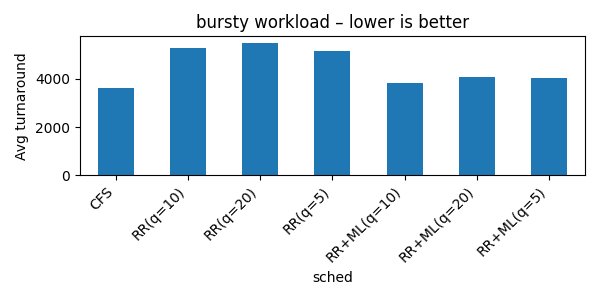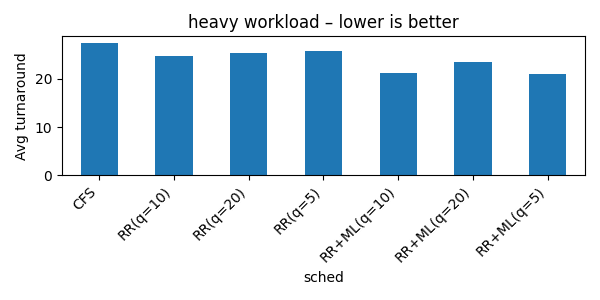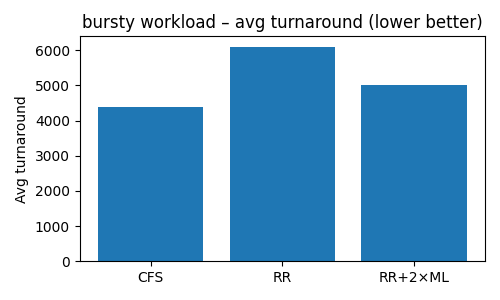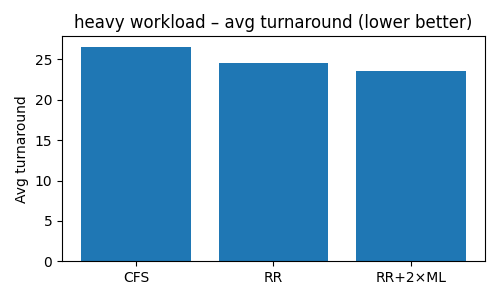OS-research-lab
ML-Augmented CPU Scheduling: RR vs CFS
Following my last post on ML in LRU, I wanted to explore a somewhat novel idea:
What if we applied machine learning inside the CPU scheduler?
I built a Python simulation and fed it two classic workloads to test how ML-enhanced Round-Robin scheduling compares to the Linux default, CFS.
Workloads
- Bursty: 90% micro-tasks, 10% long scans
- Heavy-tail: thousands of short jobs, a few extremely long ones
Schedulers Compared
| Scheduler | Description |
|---|---|
| CFS | Linux default — picks the task with the least CPU time so far (fair-share), auto-shrinks time slices as the queue grows |
| Round-Robin (RR) | First-in, first-out with fixed time slices (tested q = 5, 10, 20) |
| RR + ML | Uses an online classifier to move likely-to-finish tasks to the front of the queue |
| RR + 2×ML | Adds a regressor that predicts task duration and adjusts quantum on the fly (between 2–20 ms) |
Results
Bursty Workload (Lower is Better)

Heavy Workload (Lower is Better)

Bursty Workload — RR vs 2 x ML

Heavy Workload — RR vs 2 x ML

Takeaways
Bursty Workload:
- CFS had the lowest average and best tail latency — fairness pays off
- RR + ML improved turnaround by prioritizing short tasks
- RR + 2×ML added too many context switches when mispredicting large scans → performance dropped
Heavy Workload:
- RR + ML shaved off 10–15% in average turnaround (95% of jobs fit in one slice)
- RR + 2×ML added ~3% more improvement, but still suffered on the monster jobs
- CFS came third, mainly because it insists on fairness — even for long tasks
Final Lessons
- CFS’s
vruntimeis brilliant — near SJF performance, yet starvation-proof - ML helps when short tasks dominate (e.g., API gateways, GPU micro-batching)
- ML-based quantum tuning looks cool on paper, but often costs more than it saves:
- More context switches
- More tuning knobs
- Harder to debug
CFS is extremely well-designed — a solid default.